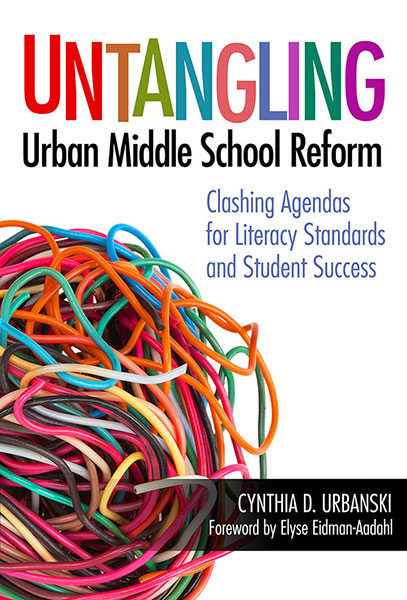Index
I love to give presents. I get a lot of pleasure out of picking exactly the right thing for someone and imagining how much they’ll enjoy it. And as I’ve spent more and more time writing, I’ve come to think of stories as presents I can give to people—especially since I’m hopeless at crafts and the domestic arts. No one is liable to be happy to get a jar of homemade fruit mush hopefully labeled “jam” from me. And I once famously brought a batch of rock-hard “paleo balls” to a holiday cookie party. But they might like something that diverts them at the end of a long day, or interrupts the confusion, sadness or isolation that all of us feel occasionally (or sometimes all the time). And when it comes to telling stories, that is something I think I can do.
My love for giving gifts saved me when I was stuck in an especially difficult point in my first novel, Dreamwood . This was a middle grade fantasy I’d started as a break from another project, a book full of Important Ideas, but conspicuously absent of the storytelling ability that would make anyone care to read it.
In the midst of my flailing, I had an idea for a story that I thought my sister might like. She’s a big reader of fantasy, and over the years she and I have spent a lot of time comparing notes on what we’ve enjoyed. We still get together on the phone and talk about books. Thanks to her, I have some inkling of what’s going on in urban fantasy, and am forever grateful that she turned me on to Jim Butcher and The Dresden Files.
The books that I treasure still feel like a gift meant for me. Something that shores me up in bad times, and helps me soar in good.
I wrote the first draft of Dreamwood as a present to her and me as we used to be: two voracious fantasy readers who loved magic and spookiness and strong girls.
To my surprise, I sold the book, to an editor who found bits of it “delicious.” (It’s certainly the first time any of my creations have been so described!) But as I worked on it, I ran into trouble. I grappled with the sense that I needed to “do something important” with this book, something that would justify myself in the eyes of my colleagues and co-workers as well as my former MFA classmates.
At a dark moment I realized that my intentions with what I was writing were all about my own ambitions. And they were getting me nowhere.
I went back to my original thought of writing something my sister might enjoy. I thought about books that made a difference to me as a child, what they gave to me. And I realized I was working myself into knots over the wrong thing. I realized the way forward was to think of my story as something I wanted to give a reader. The thing that mattered—the only thing that mattered—was thinking of what I wanted to give to someone else.
I began to write with a different purpose. My aim became to make it into a present. In my notes about the book, I have an entry: “Create the book that someone hugs to their chest because it makes them feel their best self.”
The books that I treasure still feel like a gift meant for me. Something that shores me up in bad times, and helps me soar in good.
Since then, a friend has given us a copy of Lewis Hyde’s book, The Gift, which looks at art and creative activities as gifts, outside the market. It’s become a useful reminder for me to think of others and their own delight whenever I sit down to write.
When I write I try to remember that all I’m doing is giving a present. That thought helps me when I get waylaid by self-doubt or start comparing myself to other writers. Of course, I work hard at my craft and I try constantly to improve, to challenge myself, and to learn from other writers. But I also know that even humble gifts can make a difference to someone.
Let yourself be silently drawn by the stronger pull of what you really love. It will not lead you astray. —Rumi
I write poems because I have read poems. Still do. The voices of poets down through the ages, leaving indelible trails, demanding that we hear, think, imagine, connect.
Reading poems, some life blood is stirred. Some sensory nerve touched. Some curiosity tweaked. Some kinship sparked. Some empathy felt. An exchange takes place. An intimacy. Writer and reader meet in a wordful estuary where the salt of the poem mixes with the freshwater of reading.
I am reminded of a class of middle schoolers in New York’s Chinatown who were new to our country. Often, missing home, grieving for what they left behind, they seemed quiet and melancholy. The teacher read aloud poems she hoped would remind them of the joy and beauty to be found in ordinary things of the world. Sara Teasdale’s “Night” struck a chord.
Stars over snow,
And in the west a planet
Swinging below a star—
Look for a lovely thing and you will find it,
It is not far—
It never will be far.
Students copied this poem in their notebooks. It became a touchstone as they searched their new home and their memories for “lovely things.” Sophia found something “lovely” in the attitude and actions of her grandmother.
Lovely comes from help.
A beggar lay down on the grass.
My grandmother walks quickly,
took him to home.
Took out food, let beggar eat.
Took out tea, let beggar drink.
Beggar eats like wolves and tigers.
Gave money to beggar. Beggar thanked
my grandmother so much!
Stars laughing, birds singing.
Everything is happy.
For my grandmother takes pleasure
in helping.
Rui took a playful run at the “Night Sky.” His fresh voice creates startling and vibrant images.
It's night again
Silence everywhere.
But in the sky, it is very lively.
Moonlady reflects shining light.
Starboys make beautiful pictures.
Oh, no! Greedy cat eats the moon.
Shooting stars run fast to save it.
Recognizing, attuning, responding, connecting. This is the work of poetry. This is how it shows us a way we might face life.
I’ve often been asked how I ended up writing children’s books, and for that matter, a mystery series. “After all, you’re a lawyer, right?”
It’s a good question. A very good question.
Yes, I am a lawyer. When I was practicing, I was what you would call a “disgruntled lawyer.” That’s disgruntled with a capital D. Not an unfamiliar term to many lawyers.
One day, my mom gave me some good advice.
“Quit,” she said.
“What did you say?” I said. At the time, I was on my lunch break at a pay phone1 on a congested street in lower Manhattan. My hearing has never been great, but I knew I must have been imagining our conversation.
“Can you please repeat what you just said? I think we have a bad connection.”
“Quit. We’ll figure it out.”
I did. Surprisingly, my mom had a plan. I had no other plan but to eat my way through the chocolate éclair section at my local bakery. (It wasn’t a pretty sight.)
“Call Barry,” she said. He was one of my mom’s neighbors with a family law practice. He also taught family law.
I made the call. He needed help with some research projects. So, I wrote a bunch of memos, and then he asked me to write the content for his mediation website. It was this project that got me my job as a legal editor. When I was pregnant, I decided to freelance, and around that time, I began writing short stories. My twin suggested I enter the Symphony Space Selected Shorts contest. I did. I lost. Year after year. Rinse and repeat. But I was writing.
My husband suggested I take a writing class. I signed up for a children’s fiction class and as soon as I walked in the classroom, I knew I had found my people.
Then, during one Christmas holiday, I noticed my niece yawning while she was opening her presents. It was an eye opening moment. She was bored. That’s when I decided to give my nieces and nephews more meaningful gifts. I wrote them stories. One of those stories was about the Double Trouble Banana Split Detective Agency on the hunt for a missing birthday cake. The detectives were two monkeys working their beat from a tree house. All of the characters were named after, or inspired by, members of my family.
I brought a version of this story to my writing workshop. Everyone hated the monkeys. Got it! The monkeys had to go. So what kind of detectives would kids find engaging? It somehow crossed my mind, wouldn’t it be interesting if the detectives, the enforcers of justice, were the smallest animals on a farm? Little by little, the enforcers became mice, and at some point I started to play around with the idea of making them like the FBI. But what kind of enforcement would be needed on a farm? And that’s when it hit me. Food enforcement. They would be MFIs, Missing Food Investigators. Hence, the creation of The Case of the Missing Carrot Cake, A Wilcox and Griswold Mystery.
At first, the story was a picture book. But my word counts were off the charts. They were around 1200-1600 words. I knew an editor would be hyperventilating if he/she saw the word counts. Playing with the line spacing, margins, fonts, etc. wouldn’t help. (Although I can’t say I didn’t think of it.☺)
But I had no idea how to cut that many words and still write a mystery that was laden with clues, flushed out suspects, red herrings, etc. Then I went to one of the NJ SCBWI conferences. I had a one-on-one critique with the great, Sudipta Bardhan-Quallen. She told me, I’m paraphrasing a tad, but this is the gist of the conversation.
“This is not a picture book.”
Once again, I thought I was hearing things.
“This is a chapter book. Eight short chapters and you’re done.”
It was as if a light bulb went off. I started rewriting it as an early chapter book. Back to my critique group for what must have been a gazillion rewrites before I sent it out. In 2012, I met my wonderful, stupendous agent, Liza Fleissig, from the Liza Royce Agency. I did a number of rewrites for Liza, and then a number of rewrites for Creston Books. My amazing, awesome editor and publisher, Marissa Moss, suggested I add more food metaphors, hype up the humor, leave more red herrings, and tighten the story. Her comments were spot on.
So, in a nutshell, that’s pretty much how I ended up writing a mystery series. And I have to say, it is hands up and down the absolute best job in the universe!
—
1 Yes, I am that old. I did not own a cell phone. When I was in college I even used an electric typewriter during my freshman and sophomore years.
I’m alone in a room. The door is locked—wait, no—the door isn’t locked. There is no door. Not anymore. It’s gone. I’m staring at a wall. I write to find out what’s on the other side of that wall.
From the wall, I hear tapping. Tap-tap-tap. I tap, she taps. I tap, he taps. It taps. Are those my own taps, echoing? Or is something tapping back? At me? For me? I listen to the rhythm, the urgency of the taps, to the silences in between.
Then I notice something about the room: it has no ceiling. The walls are high and smooth. Nothing to grab onto. I’m looking up at the sky, at bunches of fat cotton clouds. Cumulonimbus, someone says. Hello, I say. Those are called cumulonimbus clouds. Thanks, I say. And then it’s raining on me.
I’m in a room with no way out and a view of the sky and I am soaked and the room is rapidly filling up with rainwater. I’m waist deep already. My table is floating, my pen and pad of paper are nowhere to be found. Oh, there they are. I just got an idea—if I could only jot it down.
I swim across the room and make a grab for my pad. It’s soaked. Well, that’s no good to me now. At least my pen still works. I’ll have to write on my hand. I hope the rain doesn’t wash it away. Oh, well, it did. I’m holding the idea in my head. Is this even a good idea? Worth the effort? Worth risking death? Worth drowning for?
But now the water level has risen to the point where I am near the top of the walls. I’m not in great shape, and treading water won’t last for long. So I pull myself out of the water and I’m standing now on the narrow edge: the top of the wall is now an island. And now I look around and notice it’s not water I’ve been floating in. It’s a sea of words. In the distance, a half-mile, maybe, or a hundred miles? I see someone else, standing on her island. She’s waving at me. Or is she? I don’t know. I’m over here on my island, and she’s over there on hers. I wrote myself out of that room. And now here I am, a little less alone, because I see her over there, and she sees me. I wrote myself out of the room and now I will write myself off of this lonely little island, write more clouds into the sky and pour words into the ocean, and maybe, if I’m lucky, write myself a bridge across that ocean, to that island over there, to meet another person, to tell her the idea I have been holding in my head.
I’m a little embarrassed to say that I began writing later in life. The day-to-day existence of a film and television actor in Los Angeles is inherently at the mercy of the written material being produced. There came a time when I began writing as an evolution of necessity. It dawned on me that, in my dreams, I could not only be the protagonist of great stories—I could be the author. At that time, the choice to write was born of a hunger for material. I was like a slimy primordial fish crawling out of the sea in a desperate search for food.
Since then, writing has become much more to me. It has become the primary focus of my creative energies. I realize now that in the multi-media, collaborative, nuanced endeavor that is film and TV, most people must work in reference to something else. That is to say, the actors take their cue from the director. The director takes his or her cue from the producers. The producers take their cue from studios or financiers or audiences. The writer, on the other hand, is the only piece of the puzzle whose sole reference point is himself, his own mind, his own experience (unless it’s an adaptation of a mega-successful series of Young Adult novels featuring a love triangle and hot zombies).
The work of a writer is unique, sacred, and terrifying in that way. In this industry, being a writer is the closest you might come to real, creative freedom. That’s why I write.
The most common question I get asked by children and adults alike is, “What’s your inspiration?” This query has many close cousins: “Where do you get your ideas?” “Why do you write for children?” “What made you write a book about a certain topic?”
There is nothing wrong with these questions, except that there is no succinct way to respond. Such wonderings seem so simple, but in reality are powerful and deep. In a time and place where people seem hungry for answers and for easily-digestible soundbites, I often find myself floundering for a way to touch the truth of these issues within the space of a conversation. Because, frankly, my entire job as a writer is to transform my ideas and inspirations into words. This effect takes hours, days, or years to achieve—and the result is never a simple soundbite. It’s a book, a story, a scene, a narrative that most likely speaks its truth slantwise.
What inspires me? Things I see. But such a simple phrase cannot encompass what it means to glance across a room and see a mother lovingly brush her child’s hair back off his cheek, and upon witnessing this, come to know one of my characters a bit better.
Where do I get my ideas? Sometimes straight out of my experience. But that statement doesn’t adequately explain the process of turning my own childhood fears, insecurities, and doubts into a novel like Camo Girl. Ella, the main character in that book, is not me at all, yet she feels the way I felt many times as a young person navigating my friendships.
Why do I write for children? Because the characters that come out of me are often very young. Yet, that assertion cannot fully capture my feelings about my amazing audience of young readers, who approach each page with open wonder, who challenge me to be my best, who look me in the eye and tell me the truth about everything. I can’t ever fully explain why I choose to explore my childhood self in my writing, or how I see that young self reflected in my characters and even in my readers.
What makes me write about certain topics? My own creative hunger to learn and to touch things unknown. I started work on The Rock and the River—a novel about two brothers exploring the Black Panther Party in 1968 Chicago—because I wanted to imagine what it felt like to exist in that moment in time and have to make a choice about where you would stand, and what you would stand for. I became motivated to finish and publish the book because I recognize that my young readers and I still face such choices today, though circumstances have changed.
When the world requires succinct answers of me, I can give them. But I always try to leave space for people to read more deeply into those answers, if they are willing. When I speak to groups of young readers, I tell them simply: There are two reasons why I write. First, I write to express myself and to share the things I know a lot about. Second, I write to learn and explore things I know very little about. Almost always, in response, the students nod silently. And then they keep on listening. Instinctively, they understand. There is always more to say.
Excerpt from the article:
 “Just as Agassiz had his student think about the fish without his notes or the specimen, I often have my students do what I call Neuron Note. The name is biological, it is jazzy, and it implies thinking. The students go home without their books or notes and write a summary of what they think they understand. I stress to the students that it is all right if they do not understand, but they need to realize they don’t understand. Just as Agassiz’s student said, “I see how little I saw before,” the Neuron Note helps students identify what they do not yet understand.”
“Just as Agassiz had his student think about the fish without his notes or the specimen, I often have my students do what I call Neuron Note. The name is biological, it is jazzy, and it implies thinking. The students go home without their books or notes and write a summary of what they think they understand. I stress to the students that it is all right if they do not understand, but they need to realize they don’t understand. Just as Agassiz’s student said, “I see how little I saw before,” the Neuron Note helps students identify what they do not yet understand.”
Read the full article
Download “Let’s Take Another Look at the Fish: The Writing Process as Discovery”
Excerpt from chapter:
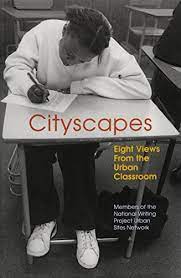 “I wanted to keep track of what happened when parents and children wrote about the same subject. It was my belief that through writing a teacher can include those families who might otherwise feel alienated from the school; it’s a way for parents to stay involved in their children’s education. I was also interested in what effect, if any, the parental writing might have on the children. This was another form of communication for the children, the parents, and the teacher.”
“I wanted to keep track of what happened when parents and children wrote about the same subject. It was my belief that through writing a teacher can include those families who might otherwise feel alienated from the school; it’s a way for parents to stay involved in their children’s education. I was also interested in what effect, if any, the parental writing might have on the children. This was another form of communication for the children, the parents, and the teacher.”
Read the full chapter
Download “Are You the Teacher Who Gives Parents Homework?”
Excerpt from chapter:
 “One of the purposes for my initial school year phone call was to find out about the interests of my students and how they could be honored in the classroom. It was these phone calls that informed me about Andrew’s love of science, Jonathon’s interest in computers, Lynda’s use of journal writing to help control her temper, and Shonda’s desire to read chapter books. While I unfortunately didn’t act on all of this information, I was able, over time, to use it to enhance children’s learning. Andrew became an avid observer of our monarch caterpillars, chrysalis, and finally butterflies. Shonda was encouraged at school now as well as home to read and talk about chapter books. And on numerous occasions, Lynda was encouraged to use her journal to help express angry feelings and hurtful experiences.”
“One of the purposes for my initial school year phone call was to find out about the interests of my students and how they could be honored in the classroom. It was these phone calls that informed me about Andrew’s love of science, Jonathon’s interest in computers, Lynda’s use of journal writing to help control her temper, and Shonda’s desire to read chapter books. While I unfortunately didn’t act on all of this information, I was able, over time, to use it to enhance children’s learning. Andrew became an avid observer of our monarch caterpillars, chrysalis, and finally butterflies. Shonda was encouraged at school now as well as home to read and talk about chapter books. And on numerous occasions, Lynda was encouraged to use her journal to help express angry feelings and hurtful experiences.”
Read the full chapter
Download “Making Connections Between Family and School”
Excerpt from chapter:
“The students and teachers in the narratives in this book are not new to the school, the community, or to writing, but they are new to the narrative of writing that the Writing Project brought and the accompanying writing assignments. The teachers and students then had to improvise in order to perform good teacher and good student identities in these new social situations. Holland et al. point to improvisation as having transformative potential. Improvisation opens up space, much like Bettie’s concept of ‘passing,’ for change.
Over time, the improvisations of earlier generations can become the expectations of the next, espousing change. Gee (2011) refers to this passing and improvisation, or these newly negotiated identities, as discourse identity or D-identity. The negotiation of narratives must be recognizable by others in order for it to be an identity, so the power for identity construction lies in discourse or dialogue with other individuals. These identities are not distinct from institutional identities, and so institutions certainly make use of discourse identities in order to solidify the institution’s social hegemonic position. For this reason, improvisation does not guarantee change or transformation; it simply has the potential for it because we are constantly making and remaking scenes in our daily lives.”
Read the full chapter
Download “Narrowing the Lens: Teaching as Narrative Negotiation—A Chapter from Untangling Urban Middle School Reform” (PDF) →
Purchase the Book
TC Press Online Store →
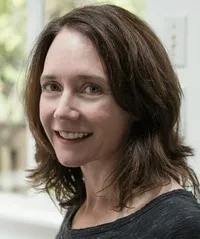


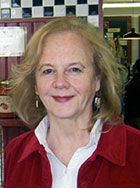
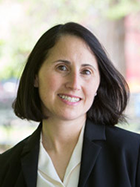
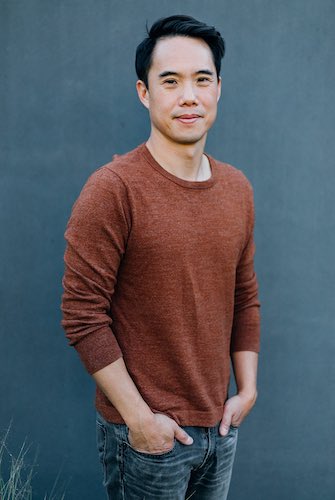
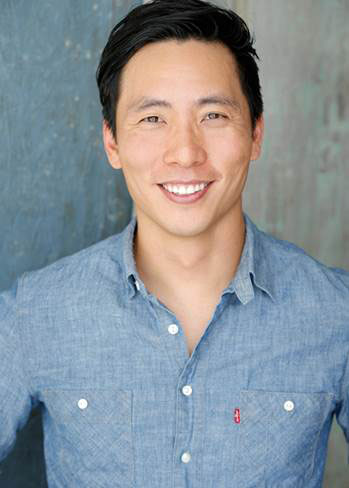
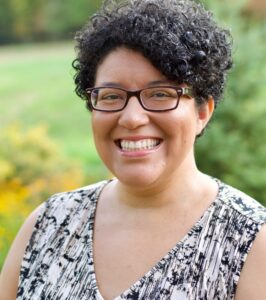
 “Just as Agassiz had his student think about the fish without his notes or the specimen, I often have my students do what I call Neuron Note. The name is biological, it is jazzy, and it implies thinking. The students go home without their books or notes and write a summary of what they think they understand. I stress to the students that it is all right if they do not understand, but they need to realize they don’t understand. Just as Agassiz’s student said, “I see how little I saw before,” the Neuron Note helps students identify what they do not yet understand.”
“Just as Agassiz had his student think about the fish without his notes or the specimen, I often have my students do what I call Neuron Note. The name is biological, it is jazzy, and it implies thinking. The students go home without their books or notes and write a summary of what they think they understand. I stress to the students that it is all right if they do not understand, but they need to realize they don’t understand. Just as Agassiz’s student said, “I see how little I saw before,” the Neuron Note helps students identify what they do not yet understand.” “I wanted to keep track of what happened when parents and children wrote about the same subject. It was my belief that through writing a teacher can include those families who might otherwise feel alienated from the school; it’s a way for parents to stay involved in their children’s education. I was also interested in what effect, if any, the parental writing might have on the children. This was another form of communication for the children, the parents, and the teacher.”
“I wanted to keep track of what happened when parents and children wrote about the same subject. It was my belief that through writing a teacher can include those families who might otherwise feel alienated from the school; it’s a way for parents to stay involved in their children’s education. I was also interested in what effect, if any, the parental writing might have on the children. This was another form of communication for the children, the parents, and the teacher.”